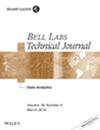基于QGIS的尼泊尔甘达基省流域分析
Q1 Engineering
引用次数: 7
摘要
甘达基省现有水电项目29个,具有良好的水力发电潜力。由于我省水资源丰富,需要对流域进行分析,以便对水资源和自然资源进行管理、规划和确定。GIS提供了空间和非空间数据的整合,以了解和分析流域过程,并有助于制定流域综合开发和管理计划。利用NASA-Earth数据中的DEM作为QGIS对甘达基省流域进行形态计量分析的主要数据。通过计算水流方向并在watershed工具中使用,从DEM中进行流域圈定。在进行圈定之前,进行了必要的填充汇校正。使用flow direction工具创建了一个表示流动方向的栅格,以确定贡献面积。使用Flow accumulation Tool从Flow direction光栅中创建Flow accumulation光栅。采用基于点的方法为每个选定的点划定分水岭。所选的点可以是一个出口,一个测量站或一个水坝。利用地面气象站的年降雨量资料,在QGIS中生成雨量图,利用IDW插值方法对全省和流域的降雨格局进行了研究。本研究为甘达基省流域提供了流域面积、流长、坡度、排水密度和降雨模式等主要形态计量学流域参数。在此基础上,对卡斯基流域进行了参数比较。本研究结果可作为流域基础设施规划的参考,也可为地方政府在能源、水资源、灌溉和基础设施方面的政策制定提供参考。本文章由计算机程序翻译,如有差异,请以英文原文为准。
Analysis of Watersheds in Gandaki Province, Nepal Using QGIS
Gandaki province has the good potentiality of hydro-electricity generation with existing twenty-nine hydro-electricity projects. Since the Province is rich in water resources, analysis of watersheds needs to be done for management, planning and identification of water as well as natural resources. GIS offers integration of spatial and no spatial data to understand and analyze the watershed processes and helps in drawing a plan for integrated watershed development and management. The Digital Elevation Model (DEM) available on the NASA-Earth data has been taken as a primary data for morphometric analysis of watershed in Gandaki Province using QGIS. Delineation of watershed was conducted from a DEM by computing the flow direction and using it in the Watershed tool. Necessary fill sink correction was made before proceeding to delineation. A raster representing the direction of flow was created using Flow Direction tool to determine contributing area. Flow accumulation raster was created from flow direction raster using Flow Accumulation Tool. A point-based method has been used to delineate watershed for each selected point. The selected point may be an outlet, a gauge station or a dam. The annual rainfall data from ground meteorological stations has been used in QGIS to generate rainfall map for the study of rainfall pattern in the province and watersheds using IDW Interpolation method. The present research work provides some major morphometric watershed parameters like drainage area, flow length, slope, drainage density and rainfall patterns for watersheds in Gandaki Province. Furthermore, the parameters were compared among the watersheds in Kaski. The results of this study can be used as a reference for proposing infrastructures in those watersheds and it can also be used for making policy by local government authorities related to Energy, Water Resources, Irrigation, and Infrastructures.
求助全文
通过发布文献求助,成功后即可免费获取论文全文。
去求助
来源期刊

Bell Labs Technical Journal
工程技术-电信学
自引率
0.00%
发文量
0
审稿时长
6-12 weeks
期刊介绍:
The Bell Labs Technical Journal (BLTJ) highlights key research and development activities across Alcatel-Lucent — within Bell Labs, within the company’s CTO organizations, and in cross-functional projects and initiatives. It publishes papers and letters by Alcatel-Lucent researchers, scientists, and engineers and co-authors affiliated with universities, government and corporate research labs, and customer companies. Its aim is to promote progress in communications fields worldwide; Bell Labs innovations enable Alcatel-Lucent to deliver leading products, solutions, and services that meet customers’ mission critical needs.
 求助内容:
求助内容: 应助结果提醒方式:
应助结果提醒方式:


